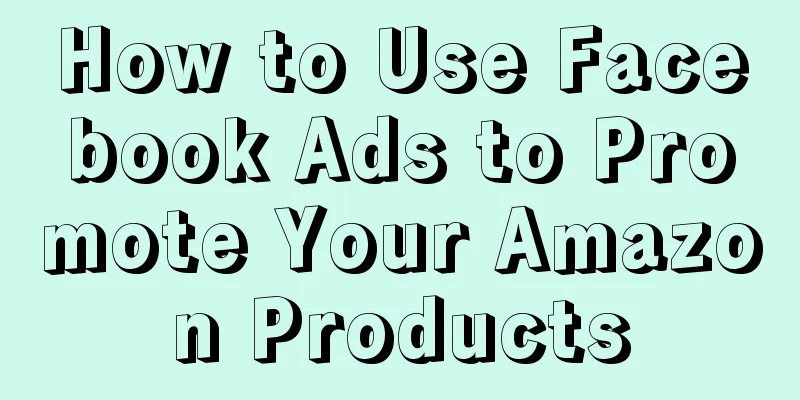Amazon product selection tips for 2021

|
Product selection tips 1. The price of goods should be between 10 and 50 US dollars. Try not to be lower than 10 US dollars. The profit will be low and the operation will be difficult. 2. Product weight (preferably between 1 and 2 pounds) to reduce logistics and warehousing costs. 3. Market capacity: make sure the product has a market Judgment criteria a. The product is ranked within 5000 in the major category b . The top three keywords have a monthly search volume of more than 100,000 c . Check other platforms, such as eBay, to see if similar products are also on sale. 4. Product quality. The products should be sturdy and durable, not easy to break or deform. Especially during transportation, fragile products require more attention. 5. Number of reviews. The first page of product search should contain at least 2 to 3 products with less than 50 reviews . 6. The profit margin should not be lower than 15% , so the overall operation idea should be considered clearly when setting the price, so as to avoid abandoning the product due to profit issues after it is put on the shelves. 7. There is room for improvement and optimization of listings. A/B testing can be done using software such as Splitly. 8. The problem of rapid replication: Can the product be easily found in China? 9. Non-seasonal products are preferred 10. Scalability: Is it possible to develop other related products to expand the brand? 11. The product itself has room for upgrading and improvement 12. The product is of a nature that requires regular purchase 13. Products have diverse keywords Keyword selection method: a. Associative words in Amazon search box b. Automatic keyword recommendation for pay-per-click advertising ; c. Find the most frequently used words in the titles of the top 5 similar products d. Others, such as borrowing related software 14. Define target customers and whether they are consumer groups 15. Region and culture may lead to differences in size, color and style, as well as the races, body shapes, weather and habits involved in each market. Product selection method 3. Selection of hot-selling peripheral products If you have finally created a best-selling product, you can consider digging deeper into the product's peripheral accessories or related products. The simplest way is to make variations, such as developing other colors, other sizes, different packaging, etc. For example, if you find that outdoor multi-function knives are selling well, you can refer to other sellers' stores, or consult the supplier. This product selection model can greatly reduce the waste of time. 4. Category-based product selection method More and more companies are operating multiple accounts. On the one hand, this can help them avoid store risks, and on the other hand, it is conducive to the overall layout of products. Generally, some companies’ store planning is based on category positioning. For example, account A is positioned in the computer office and consumer electronics categories, account B is positioned in the outdoor categories, account C is positioned in the mother and baby and pet categories, and so on. One of the biggest benefits of this model is that it helps sellers conduct in-depth research on categories, rather than just browsing through all categories aimlessly and finding that there are no good products. In addition, in terms of store category positioning, try to find several categories of products that are related or similar, such as operating furniture and tool categories in the same store. 5. Related recommendation product selection method Relevant data shows that about 35% of orders on Amazon come from traffic recommendations associated with the listing details page. It is conceivable that this part of the associated recommended products is also of reference significance for sellers to select products. For example, if you enter can opener in the search and click on a listing, you can see Frequently bought together , Sponsored products related to this item , Customers who bought this item also bought , Compare with similar items , etc. 6. FB Group Product Selection Method Increasing reviews is an important task in Amazon operations . Many sellers stay in Facebook groups and post crazily almost every day. So think about it the other way around: the products posted by other sellers must be their main products. Can we also sell them ? If you see a product that catches your eye, it is recommended that you save the image immediately and go to the homepage to use product selection software to perform data analysis. 7. WeChat group product selection method Just from coming into contact with Amazon, there are more and more WeChat groups on mobile phones, various WeChat review groups, various so-called cross-border e-commerce exchange groups. First of all, we don’t judge how efficient they are. For me, when I have nothing to do, I will check out the posts of other sellers about what products they are selling. If I come across interesting or fun products, I will save the pictures and take some time to research them. 8. Product selection method for independent stations Maybe everyone is currently limited to selecting products on the Amazon platform, so they have never studied other third-party platforms, such as other third-party platforms: Ebay , AliExpress, etc., you can go to see what newarrival products are available. Product selection mistakes 1. Serious product homogeneity You cannot blindly follow the sales trend by being better than your competitors in appearance, function, or price. 2. Wrong method of analyzing reviews You need to analyze both positive and negative reviews. There are two purposes for checking positive reviews. First, you can see the user's usage scenario, which will make your product positioning clearer and your product definition more precise . Second, the reason why customers leave positive reviews must be that the product has brought them certain value and solved their problems, which is the core selling point of the product. 3. Ignoring user pain points Start with common problems and consider issues from the user's perspective. 4. Follow the trend in product selection For example, the previous types of products such as fidget spinners are a way of selecting products that ignores the consequences and only considers the immediate benefits. Pay attention to details 1. Product quality: Every time you purchase goods, you must inspect them to prevent a series of negative reviews caused by product quality problems from the source. 2. Qualification certificates: such as FDA, MSDS , etc. 3. Cooperation: delivery speed, advance payment, labeling, packaging and other issues. 4. Logistics speed: the time it takes for products to be delivered to the warehouse. Test 1. Fan groups: Use some review groups on Facebook to see customer feedback on the product 2. Use Amazon’s data report, ARA 3. Run ads, check clicks, bids, conversions, and let the data speak for itself Common product selection tools 1. Junglescout : You can browse most of the data on the product search page: name, brand, number of sellers, number of variations, price, category, sales ranking, estimated sales, estimated sales, number of reviews, review star rating, and logistics method, etc. 2. merchantwords : Based on the product search results and popularity, you can understand the specific demand for the product in the market. 3. Google Trends: Sellers can search by product keywords or associated keywords to find products with higher search popularity. 4. Keepa plug-in: It can not only monitor the historical price and historical ranking of the product, but also record the growth of the flash sale record and the number of comments of the sku. 5. Camelcamelcamel : Click to enter the details page of any Amazon product, it will show the sales ranking changes and price history of the product, which is very helpful for analyzing the product life cycle. How to avoid copyright infringement 1. You can search directly on the official website with keywords: https://www.ikjzd.com/a/16491.html 2. Use Google Image Search to identify it; 3. You can determine whether the product has a patent by looking at the supplier’s price and minimum order quantity, or directly consult with an experienced distributor; 4. Check the number of sellers on Amazon and the degree of copycat sales. Ask suppliers for advice and communicate with experienced sellers. |
<<: How to quickly set up long and short discount codes for Amazon off-site promotions
>>: What Amazon needs to do every day
Recommend
What is AMZScout? AMZScout Review
AMZScout is the smartest Amazon product research t...
During the epidemic, those popular dropshipping products
In the past two months, due to the epidemic, the d...
Walmart raises wages for 560,000 employees! Average hourly wage raised to $16.4!
Walmart announced Thursday that it will raise hour...
What is BSI? BSI Review
BSI, the British Standards Institution, is the wor...
What is Amazon Map Tracking? Amazon Map Tracking Review
Map Tracking was launched in November 2017. Amazon...
Want to do cross-border e-commerce? You must focus on both product selection ideas and product selection methods
text If sellers want to win with their products, ...
Anaconda is back! This time, Amazon sellers join forces to defeat it!
In the second half of last year, if we were to ta...
What are the Sakata Five? Sakata Five Review
The Bantian Five Tigers refer to the five cross-bo...
What is Google Trend? Google Trend Review
Google Trend is an application product launched by...
Want to boost sales with reviews? What’s more important than quality and quantity is…
Cross-border sellers all know that, whether from t...
What is IPI (Inventory Performance Index)? IPI (Inventory Performance Index) Evaluation
IPI (Inventory Performance Index) refers to the in...
What are Gift Options? Gift Options Review
Gift Options include Gift Messaging & Gift-Wra...
What is Snovio? Snovio Review
Snovio is a website that integrates "Google/L...
What is AE Shipping Template Assistant? AE Shipping Template Assistant Review
The first AliExpress freight template setting tool...
Shein and logistics giant Flexport reach cooperation! Increase the managed logistics services in the US market
It is learned that on April 22, according to forei...









